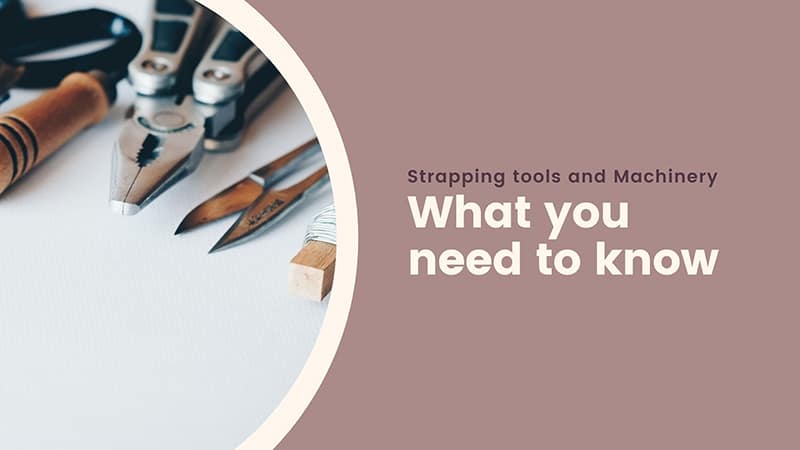Click here to get this post in PDF

There’s a wide range of both manual tools and automatic machines that are used in the strapping industry. If you’re new to the market, it can be challenging to choose what’s best for your business. Read on as we take you through everything you know to make your selection process easier.
FREQUENCY
How often you need to strap a carton, crate or pallet will help you make the decision. Unless you need to perform these tasks reasonably regularly, a manually operated tool will be sufficient for your business. You could even settle on a standard set of tools. But, once your frequency for packaging increases, it will be worth your while to invest in a commercial-grade strapping tool or machine. The increased productivity will pay off the overheads pretty quickly.
SIZE
If you are packaging relatively small cartons, you will be able to use a table strapper. The packages can be loaded with ease onto a table strapper, where they can then be fed through the arch of the strapper. Pallets or larger crates only have the option of being manually strapped unless they are being strapped in large numbers.
METHOD
The tools you need to use to secure strapping, and the method you use will also be determined by the strapping you plan to use.
Follow these tips when choosing the right tools for the strap:
First, consider polyester cord strapping. It is the easiest to work with and comes in various forms, including woven strapping, composite, and hotmelt. It is secured with a metal buckle or a plastic one.
- You’ll only need a tensioner as the buckles lock onto the strap preventing it from loosening.
- The strap will be easy to cut using a sharp knife or cutter.
- If you want to tension the strap again because the load has shifted, you’ll be able to do so using the buckle system.
Another option is polypropylene. It’s a popular choice because it is versatile and cost-effective. You can use it with both buckles and tensioners, or it can be secured with a metal crimping seal. Friction welding is also an option. Oriented polyester, which looks similar, can also be friction welded or crimp sealed.
If you opt for steel strapping you’ll need to use metal crimping seals to secure a package. There are further choices you can explore, such as using a tool to crimp the strap that allows it to form a firm grip.
If you choose to go with a separate tensioner and sealer, you’ll find there are certain advantages, such as a low individual weight. Using separate tools also gives you more choice because it can be used on a vertical surface. Some can also be fitted with attachments so they can secure odd-shaped packages. They are versatile so you can adjust notch strength to increase the strength of the seal, for example.
A combination tool can tension, seal and cut. Once it locks and tensions the strap, it then applies the seal manually. It is a tensioner, sealer, and cutter that is combined in a singular tool. The strap is locked and tensioned. Then the seal is applied manually. The tool crimps the seal and will then cut the strap. They are limited to straps up to 19mm wide. If you need to work with wider straps, you’ll to use separate tools.
When it comes to strapping cutters a safety cutter is sufficient for plastic strapping. Steel straps need specialised tools. Thinner grades of the strap will require similar shears, but you’ll need to use stronger tools for heavier grades.
Friction weld tools are another type of combination tool. They can be used with polypropylene, but you also have the choice of using oriented polyester strapping. The bonus is that they lead to shorter strapping cycle times and regular strap tensions. It’s suitable for high volume strapping of crates or pallet loads.
Table strappers are useful for those faced with medium volumes of carton strapping and bundling. They work with polypropylene strap sand friction weld sealing. The process is fast and leads to consistent strapping. They are usually mobile, so can be stored and only brought out when needed, which is a space-saver on the floor. Side action strappers can be mounted on the side of the table instead of under it so it can be used in wet or dirty conditions. The types of items you are packaging, and the conditions of your warehouse will determine which of these is most appropriate for you to use.
Arch strappers are suitable when you need to strap high volumes of cartons continuously. Some models are used with receiving conveyers.
Pallet strappers are time savers if you’re working with high volumes.
Finally, there are various specialised strappers available. These are commonly used in the printed media industry or palletised loads.
You may also like: Packaging: How Can Businesses Go More Green?
About the Author
Phil Edwards is an Outreach Specialist for Melbourne Packaging Supplies. Our goal is as with quality comes reliability & safety.
